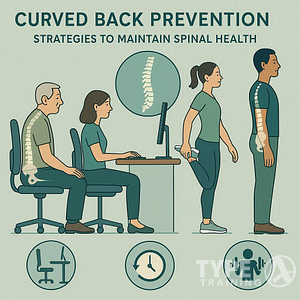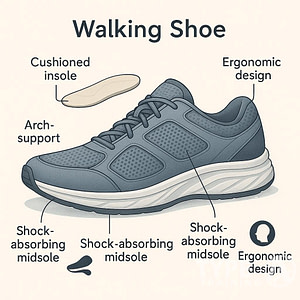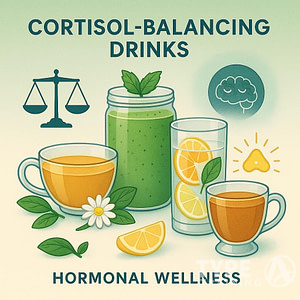Embarking on a keto diet can transform your lifestyle and improve your health, but it requires thoughtful meal planning to be successful.
Creating a practical and enjoyable keto meal plan involves balancing low-carb ingredients with adequate protein and healthy fats.
This balance ensures that you enjoy satisfying meals while staying within your carbohydrate limits.
A variety of keto recipes can keep your taste buds excited and prevent meal fatigue.
Popular posts:
From quick breakfasts like keto egg casseroles to lunches like avocado bacon chicken bun-less burgers, the options are plentiful.
By planning your meals carefully, you can maintain energy levels, feel full, and still adhere to the ketogenic diet.
14-day keto meal plans provide structure and ease, complete with shopping lists and customizable options.
These tools can streamline your meal planning process, making it easier to maintain a ketogenic lifestyle without the stress of daily decision-making.
Understanding Keto Basics
The ketogenic diet is a powerful tool for managing weight and health. This section outlines the fundamental aspects, including the nature of the diet, macronutrient distribution, and notable benefits.
What Is the Ketogenic Diet?
The ketogenic diet is a low-carb, high-fat eating plan designed to prompt your body into a state known as ketosis. In ketosis, your body shifts from using glucose as its primary energy source to burning fat, producing compounds called ketones.
You can achieve this state by reducing your carbohydrate intake to about 20-50 grams per day. This drastic reduction in carbs shifts the body’s energy metabolism, leading to more efficient fat burning.
Macronutrients on Keto
On keto, the focus is on consuming the right balance of macronutrients.
Your daily intake should include around 70-75% fat, 20-25% protein, and 5% carbohydrates.
The limited carbs intake helps maintain ketosis, ensuring the body continues to burn fat for energy.
Calculate your net carbs by subtracting fiber from total carbs, as fiber doesn’t raise blood sugar levels or interfere with ketosis.
Consuming enough protein is crucial to preserve muscle mass while providing moderate energy throughout the day.
Benefits of Keto
Following a ketogenic diet offers several health benefits.
One of the most significant advantages is weight loss due to enhanced fat burning and reduced hunger levels.
The diet’s ability to lower blood sugar levels and improve insulin sensitivity is beneficial for individuals with diabetes or at risk of developing the condition.
Additionally, a keto diet can help reduce high
Increased and sustained energy levels are another positive effect, resulting from fat and ketones being more stable energy sources than glucose.
Food and Ingredients
When planning keto meals, it’s crucial to select foods that are low in carbohydrates and high in healthy fats. You also need to stock essential pantry items while avoiding certain high-carb foods.
Keto-Friendly Foods
Keto-friendly foods are essential for maintaining a low carbohydrate intake while ensuring you get enough nutrients.
Meats like beef, chicken, and pork are excellent sources of protein and fats.
Seafood such as salmon, sardines, and mackerel provide omega-3 fatty acids.
Low-carb vegetables like spinach, kale, and broccoli are packed with vitamins and fiber.
Healthy fats come from sources like olive oil, coconut oil, and avocados.
Dairy products like cheese and butter also fit well into a keto diet, offering both fat and protein.
Essential Keto Pantry Items
Maintaining a well-stocked pantry facilitates your keto meal planning.
Olive oil and coconut oil are essential for cooking and salad dressings.
Nuts and seeds, such as almonds and chia seeds, provide snacking options rich in fats and low in carbs.
Having low-carb sweeteners like stevia or erythritol helps satisfy your sweet tooth without raising blood sugar.
Herbs and spices like turmeric, paprika, and basil can enhance your meals without adding unnecessary carbs.
Nut flours like almond flour are useful for keto baking.
Foods to Avoid on Keto
Certain foods are high in carbohydrates and should be avoided on a keto diet.
Sugar and sugary foods, including desserts and many snacks, are primary culprits.
Grains, such as wheat, rice, and oats, should also be excluded due to their high starch content.
Starchy vegetables, including potatoes, sweet potatoes, and corn, are not suitable for keto due to their high carb levels.
Fruits like bananas, apples, and oranges are generally too high in sugar for a keto regimen.
Processed foods often contain hidden sugars and carbs, making them less ideal for keto diets.
Meal Composition and Timing
Understanding meal composition and optimal timing is essential to effectively follow a keto diet plan.
Paying attention to macros, a mix of protein, fats, and vegetables in your meals, and adopting strategic meal timing can enhance your nutrition and ketone production.
Structuring Your Keto Meals
When structuring your keto meals, focus on the balance of macronutrients.
Breakfast might include eggs cooked in coconut oil and a side of avocado.
Lunch could be a bunless burger topped with cheese and a leafy green salad with olive oil.
For dinner, consider a fatty fish like salmon with a side of roasted broccoli.
Include snacks such as nuts, seeds, or hard-boiled eggs to maintain energy levels.
Using a keto meal plan ensures you remain below 20 grams of carbohydrates per day, which helps keep your body in ketosis.
Meals rich in fats and moderate in protein help provide steady energy levels and manage insulin spikes.
Timing Your Meals
Timing your meals can be key on a keto diet.
Many find that intermittent fasting complements their keto lifestyle.
A common approach is the 16/8 method, where you fast for 16 hours and eat during an 8-hour window.
For example, you might eat your first meal (breakfast) at noon, then another meal (lunch) around 3 PM, and finish with dinner by 8 PM.
This method can help increase ketone production and burn fat more effectively.
Avoid eating late at night to allow insulin levels to drop. This helps your body to use stored fat for energy and maintains steady nutrition absorption throughout the day.
Planning and Prepping
To succeed on a keto diet plan, organize your meals, create a comprehensive shopping list, and efficiently batch cook your dishes. This approach ensures you adhere to your dietary goals while minimizing kitchen time.
Creating a Meal Plan
Begin by selecting a 7-day keto meal plan that fits your preferences.
Identify recipes that utilize similar ingredients to save time and reduce waste. For example, use spinach in both a frittata and a salad.
Example Menu:
- Breakfast: Keto frittata
- Lunch: Avocado and bacon salad
- Dinner: Keto chili
Incorporate variety to keep your meals interesting. Choose a mix of protein sources, including chicken, beef, and fish, alongside different vegetables to maintain balance and stay below 20 grams of carbs per day as highlighted by the 14-Day Keto Meal Plan.
Shopping for Keto
Prepare a detailed shopping list to streamline your grocery trips.
Include keto basics such as eggs, cheese, leafy greens, and meats.
Opt for bulk purchases of frequently used items like olive oil and nuts.
Sample Shopping List:
- Proteins: Chicken breast, salmon, ground beef
- Vegetables: Spinach, cauliflower, zucchini
- Pantry Staples: Olive oil, coconut flour, chia seeds
Using shopping lists ensures you have all ingredients at hand, reducing the risk of deviations from your meal plan.
Meal Prepping Strategies
Batch cooking is essential for sticking to your keto meal plan.
Dedicate one day a week to prepare as many components as possible. Cook bacon in the oven at 400°F for 15-20 minutes, and freeze steak to cut thinly for later meals.
Tips for Efficient Meal Prep:
- Cook in Bulk: Make large batches of keto chili and freeze in portions.
- Storage Solutions: Use airtight containers to keep prepped meals fresh.
- Label Everything: Clearly label each container with the contents and date cooked.
Recipes and Ideas
In this section, we provide a range of keto recipes and ideas that make planning your meals straightforward and delicious.
From hearty breakfasts to indulgent desserts, these options ensure you stay within your carb limits while enjoying a variety of flavors.
Breakfast Options
Start your day with a satisfying keto breakfast.
Eggs are a staple due to their high protein content.
Try making a Keto Breakfast Wrap with eggs and avocado for a filling start.
1-Minute Keto Mug Muffins are another quick and easy option.
If you prefer variety, a Keto Egg Casserole with Zucchini and Ham can be prepared ahead of time for a convenient breakfast throughout the week.
Lunchtime Favorites
Lunchtime on a keto diet can be both delicious and effortless.
Lettuce wraps filled with chicken or beef make for a fresh and satisfying meal.
Another great option is zucchini noodles topped with a creamy sauce.
Avocado Bacon Chicken Bun-less Burgers provide all the flavors of a classic burger without the carbs.
Consider adding some nuts like macadamia or almonds for a crunchy side.
Dinner Delights
For dinner, focus on flavorful and hearty dishes.
Keto Chili Bake is a comforting and low-carb favorite that can be made in batches.
Meatloaf Muffins with ground beef and cheese are a perfect portion-controlled option.
Sheet-Pan Chicken and Eggplant with Tzatziki simplifies cooking by using just one pan and combining delicious flavors.
Experiment with variations by adding zucchini or other low-carb vegetables.
Snacks and Sides
Snacking on keto doesn’t have to be boring.
Cheese sticks or macadamia nuts are convenient and require no preparation.
For a quick homemade snack, try Keto Blondies or 4 Ingredient Chocolate Almond Butter Cookies.
Avocados also make for a creamy and filling snack, whether sliced or made into guacamole.
Keep a selection of berries on hand for a refreshing and slightly sweet treat.
Refreshing Keto Beverages
Staying hydrated is essential.
For a keto-friendly option, try infused water with berries and herbs.
Bulletproof Coffee, made with coffee, butter, and coconut oil, is popular for its creamy texture and energy-boosting properties.
Keto Smoothies made with unsweetened almond milk, avocado, and a handful of berries are another refreshing choice.
Avoid sugary drinks that can disrupt ketosis.
Indulgent Desserts
Even on a keto diet, you can enjoy dessert.
Keto Peanut Butter Silk Pie combines the richness of peanut butter and cream cheese for a satisfying treat.
Keto Chocolate Chip Ice Cream Sandwiches and Easy Keto Pudding are great for a quick sweet fix.
Incorporating sour cream or cream cheese in your desserts can add a creamy texture while keeping the carb count low.
Adapting to Life on Keto
Transitioning to a keto lifestyle involves adaptations in your daily eating habits and social interactions.
Opting for ketogenic choices while dining out or attending events and remaining committed to your routine are key.
Eating Out and Social Events
Eating out can be challenging but manageable with the right approach.
Look for restaurants that offer grilled meats, seafood, and salads. Chain restaurants often have low-carb options or can modify dishes upon request.
Prioritize protein-rich options like steak or grilled chicken.
Vegetable sides are usually a good bet, but avoid starchy vegetables. Ask for olive oil or butter for added fats.
If you’re unsure, checking out the menu online beforehand can help you plan your meal.
At social events, consider eating a keto-friendly snack before you go to avoid temptation.
BYO options can help you stay on track. Bringing a dish or snack ensures you have a keto-friendly choice available.
Politeness and confidence in your dietary choices will make it easier to navigate social settings without compromising your keto plan.
Maintaining a Keto Lifestyle
A successful keto lifestyle requires consistency and habit forming.
Home meal planning is crucial. Structure your meals around protein sources like seafood, meat, or tofu, and healthy fats such as avocado and nuts. Incorporate low-carb vegetables like kale or spinach.
Being flexible yet firm in your choices is key.
Preparing keto-friendly snacks like cheese or nuts can keep you from reaching for high-carb alternatives when hunger strikes.
Setting clear goals and finding motivation through initial lifestyle changes can aid in commitment.
Keep track of progress and reward yourself with non-food rewards to maintain engagement.
Joining keto communities online or locally can also provide support and encouragement.
Frequently Asked Questions
This section addresses common concerns about starting and maintaining a keto diet, including beginner tips, meal plan strategies, and budget-friendly options.
How do I start a keto diet for beginners?
Begin by reducing your daily carb intake to about 20-50 grams.
Focus on high-fat foods like avocados, nuts, and seeds, and moderate amounts of protein.
Drink plenty of water and make sure to include electrolytes in your diet to avoid the “keto flu.”
What should my first week on keto look like?
Your first week should emphasize eating high-fat, low-carb meals.
Breakfast could include eggs and avocado, lunch might be a salad with fatty dressing, and dinner could be grilled chicken with vegetables.
Monitor your carb intake and ensure you are staying hydrated.
Can you provide tips for creating an effective keto meal plan?
To create an effective keto meal plan, focus on whole foods like meats, vegetables, and healthy fats. Avoid processed foods.
Plan meals ahead of time and consider prepping ingredients in bulk.
Use online resources or apps to track your macros and keep your carb intake in check.
What does an 80/20 keto diet entail?
The 80/20 keto diet means 80% of your daily calories come from fat and 20% come from protein and carbs.
This ratio allows more dietary flexibility while still promoting ketosis. It’s usually used by those who have been on keto for a while and want a more sustainable approach.
How can I plan a keto diet on a budget?
Buy in bulk and choose cheaper cuts of meats like chicken thighs or ground beef.
Incorporate cost-effective fats such as eggs and butter. Frozen vegetables can be a less expensive yet nutritious option.
Planning meals in advance can also help reduce waste and manage expenses.
What are the recommended first meals when starting a keto diet?
Start with simple, easy-to-prepare meals.
For breakfast, scrambled eggs with spinach and cheese.
Lunch could be a chicken salad with olive oil dressing.
Dinner might include grilled salmon with asparagus.
These meals are high in fats, low in carbs, and contain moderate protein.













